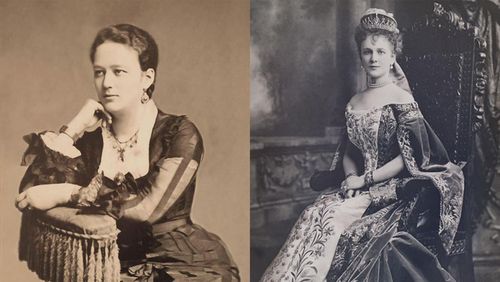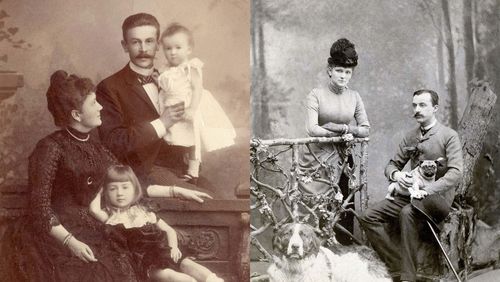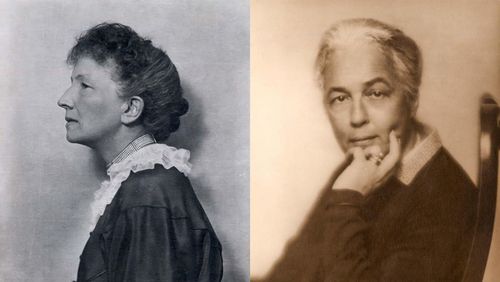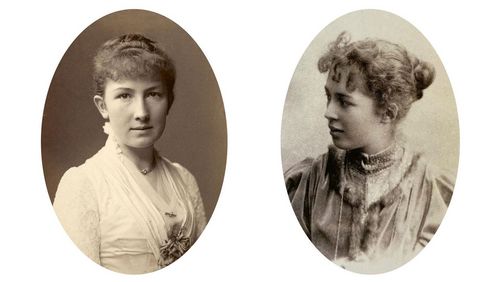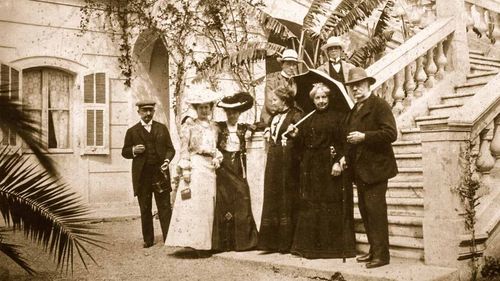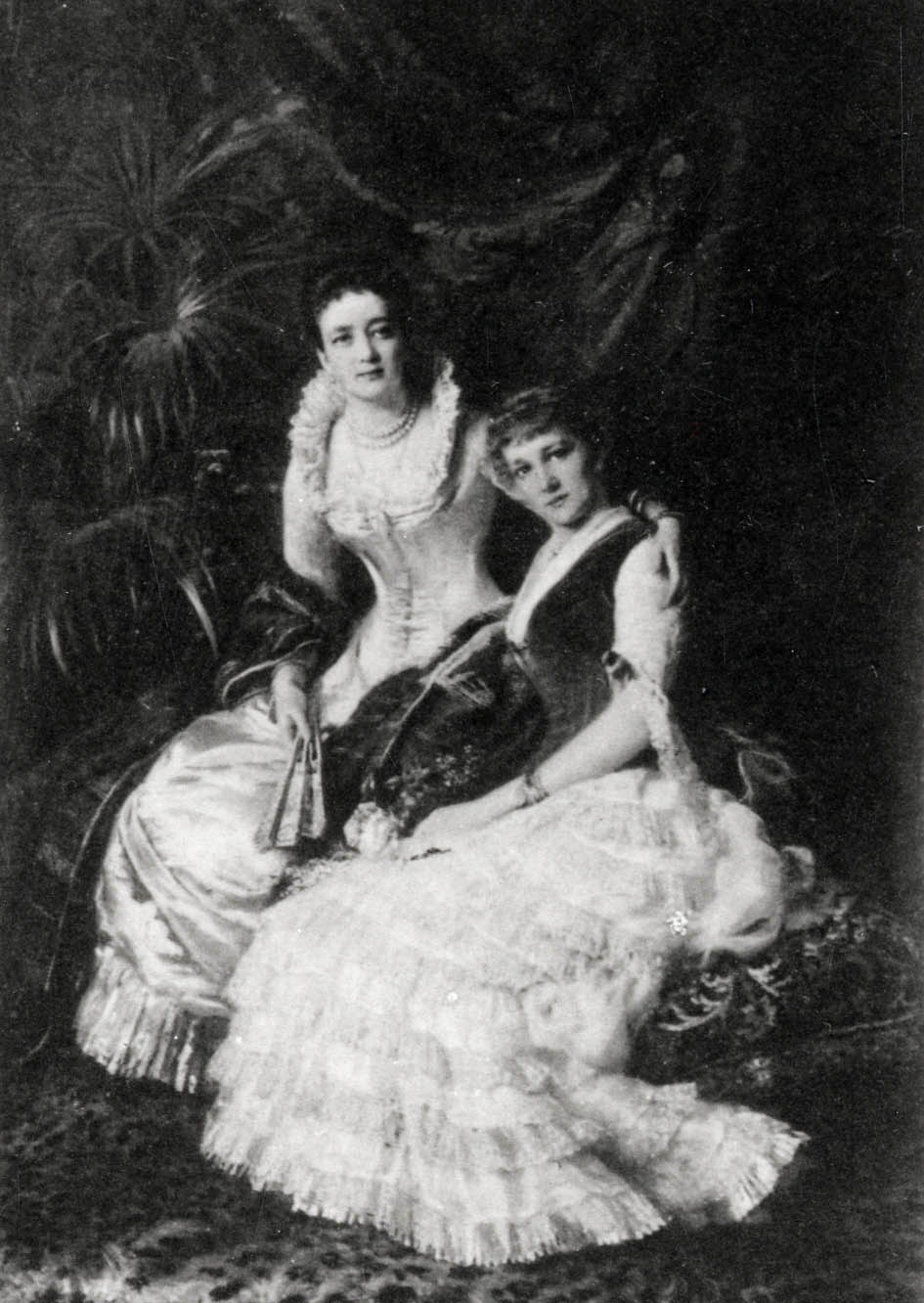
Great blessings, bitter losses
This past year saw publication of a double biography of Charlotte von Buxhoeveden und Marie von Graevenitz. The book is the third and final work about the lives of the five women who established or endowed the Werner Siemens Foundation. All three books are now available in bookshops and libraries.
Just a few years ago, very little was known about the women who established the Werner Siemens Foundation—Charlotte and Marie—or those who later endowed the Foundation with generous legacies—Anna, Hertha and Nora. Indeed, any scant knowledge about their lives had more to do with their famous fathers (or, in Nora’s case, father-in-law) Werner and Carl Siemens. Now, in the biographies written by historian Béatrice Busjan and archivist Yvonne Gross, readers can discover the personal histories of the five women who lived through the upheavals of the late 19th and early 20th centuries. The authors relate how the importance of family ties was impressed upon the Siemens daughters, how they were constant companions from a young age, and how the sisters, in their married lives, supported one another during the political turmoil before and after the First World War. Finely written and illustrated with striking photographs, the books offer deep insight into the circumstances that led the daughters of Carl von Siemens (Charlotte and Marie) to establish the Werner Siemens Foundation on 7 March 1923, and why the daughters and daughter-in-law of Werner von Siemens (Anna, Hertha and Nora) later left generous legacies to the Foundation.
The third and final volume—Charlotte von Buxhoeveden und Marie von Graevenitz. Die Töchter des Carl von Siemens [Charlotte von Buxhoeveden and Marie von Graevenitz. The daughters of Carl von Siemens]—was published in 2022.
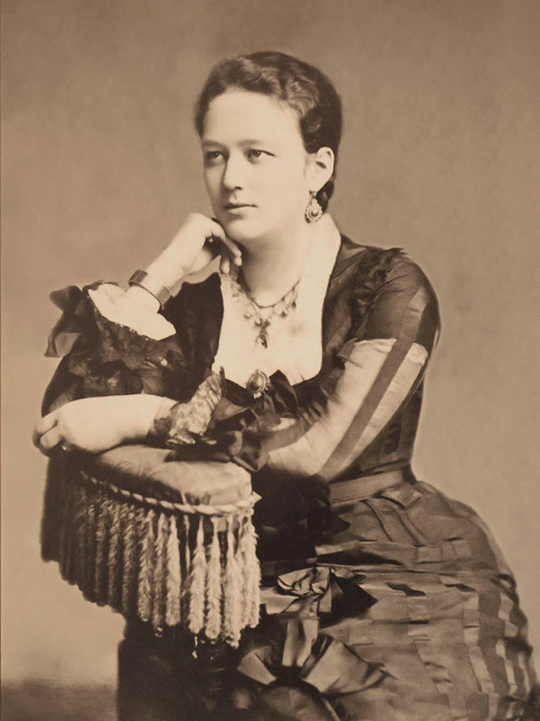
Charlotte von Buxhoeveden, née Siemens
Charlotte, the second child of Carl Siemens and his wife Marie (née Kap-herr), was born in 1858. She and her siblings spent their early childhood in a modest home located directly next to the Siemens factories in Saint Petersburg. In 1853, Father Carl had begun managing the Russian branch of Siemens & Halske, the company his brother Werner founded in Berlin in 1847. The firm’s telegraph lines were in high demand in the Russian Empire, and business thrived under Carl’s leadership.
As a girl, Charlotte was said to be happy, outgoing and strong-willed. However, her childhood in bustling, diverse Saint Petersburg was cut short when her younger brother died at the age of one. The event broke the spirit of her once vivacious mother, who suffered several miscarriages as well as a stillbirth and was often confined to her bed. To improve Marie’s health, the family moved to the Georgian spa town of Borjomi when Charlotte was nine, and then later to Berlin. But the doctors there, too, were unable to find a cure for Marie Siemens, who had also developed tuberculosis. She died in 1869; one month later, Charlotte’s youngest sister also passed away.
Life in London
Charlotte was ten years old at the time. She and her siblings, Werner Hermann and Marie, were placed in the care of a changing series of governesses. To provide a better upbringing for his offspring, widower Carl Siemens moved with them to London, where his brother Wilhelm lived with his wife, Anne, who had no children of her own. The couple took charge of raising their nieces and nephew, who spent eleven enjoyable years in London before returning to Russia with their father. In 1881, Carl and his three children again established a home in Saint Petersburg, this time in a large house near the Winter Palace, the residence of Tsar Alexander II. He and his now adult children re-entered high society, attending balls, dance parties and social gatherings. This carefree life, however, took a temporary end with the assassination of the Tsar.
In 1884, Charlotte wed Axel Baron von Buxhoeveden. The couple spent their winters in Saint Petersburg and summers on the Estonian island Saaremaa at the Buxhoeveden family estate. Axel pursued a political career, and Charlotte was content with her life at his estate. They had the means to afford a glamorous lifestyle, even after Charlotte’s favourite castle in Haimre was burnt down in the revolution of 1905.
Already in her youth, Charlotte suffered physical complaints in response to traumatic life events; as an adult, her anxiety increased and she experienced several nervous breakdowns. To recover, she frequently sought treatment at Sanatorium Bellevue in Kreuzlingen, Switzerland—she was staying there in 1911 when her daughter Lolotte died of scarlet fever.
Dispossessed and stateless
During the First World War, Charlotte left Saint Petersburg to receive medical care in Stockholm. After the communist revolution made a return to Russia impossible, she travelled to Switzerland in 1918. There, again as a patient at Sanatorium Bellevue, she learned that Axel had been killed in the civil war on Saaremaa—due to his rank as a nobleman.
Widowed and stateless, Charlotte, then 63 years old, made a fresh start in Berlin with the help of her children and other family members. To be sure, she had lost her properties in Russia and Estonia, but she and her sister had inherited a large share in the German and English Siemens factories upon their father’s death. In 1923, they used a part of this fortune to establish the Werner Foundation (later the Werner Siemens Foundation) with the purpose of supporting impoverished relatives of Siemens founders Carl and Werner.
Like many other Russian emigrants, Charlotte settled in Baden-Baden. In 1924, she obtained Liechtenstein citizenship, a new passport—and once again the freedom to travel. Against the advice of her doctors, she embarked on journeys throughout Western Europe. On 26 March 1926, Charlotte died in the Zurich hotel “Elite” and was buried in Baden-Baden.
“When Charlotte would tell her grandchildren stories about Russia and Estonia, it was like listening to magical tales from times long past,” writes author and historian Béatrice Busjan. “Indeed, throughout her entire life, Charlotte von Buxhoeveden moved in circles that, with her generation, have long ceased to exist.”
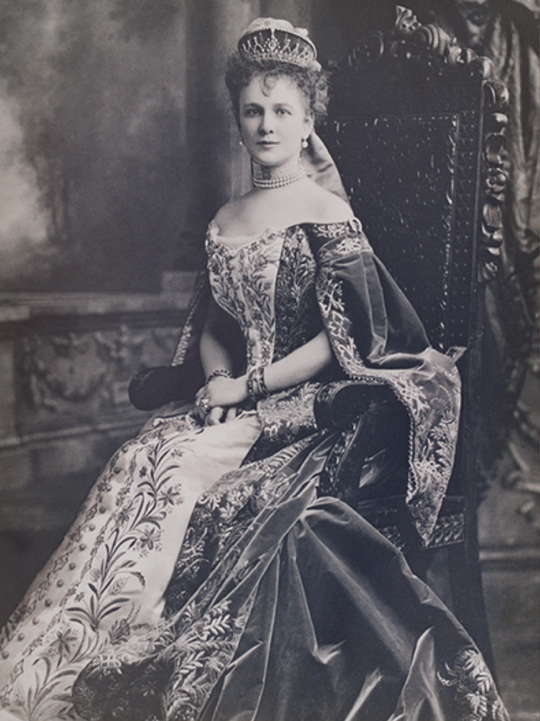
Marie von Graevenitz, née Siemens
Marie, the fourth child of Carl and Marie Siemens, was born in Saint Petersburg in 1860. Reserved and shy, she was content to live in the shadow of her older, more extroverted sister Charlotte. The two women were in close contact throughout most of their lives; they shared major life experiences such as the deaths of their mother and brother as well as the family relocations to London and back to Saint Petersburg.
In 1884, Marie married Georg Baron von Graevenitz. Her new husband was a member of the Tsar’s diplomatic corps in Saint Petersburg, and he was promoted to the rank of valet de chambre in 1890. The couple had six children, and when Georg was transferred to the Russian embassy in London, the entire family moved with him for five years. At diplomatic receptions in the following years, Marie regularly took the place of her husband, who suffered from alcoholism.
Overcoming depression
Much like her sister Charlotte, Marie also experienced episodes of depression. When her condition worsened, she too sought treatment at the renowned Sanatorium Bellevue in Switzerland in 1903. Unlike Charlotte, however, Marie recovered from her depression and was again able to lead an independent life.
In 1904, Marie’s husband was appointed head of the Russian diplomatic mission in Weimar, and the family moved to Germany for four years. When the legation was closed, they returned to Saint Petersburg, maintaining communications with foreign envoys from there. The family moved between their city residence in Saint Petersburg’s diplomatic neighbourhood and their country estates in Gostilitsy and Chmelewo, which Marie had inherited from her father. Her three sons were trained for service in the Tsar’s court at the military academy.
Supporting Charlotte
Marie also frequently took care of Charlotte’s children during her sister’s bouts of illness. It was Marie who sat at Lolette’s deathbed in 1911 and, starting in 1915, she looked after of her nephew Charles when Charlotte travelled to Stockholm for medical treatment.
In the spring of 1917, Marie witnessed first-hand the Russian Revolution and abdication of the Tsar. She fled to Helsinki, where her husband and sons soon joined her. This fateful event was to be followed by yet more misfortune: in the following year, her oldest daughter died of tuberculosis, and two of her sons later succumbed to the same disease.
Georg von Graevenitz remained loyal to the tsarist court until his death; he and Marie chose to remain stateless after the Bolsheviks stripped them of their
Russian citizenship. However, Marie maintained ownership of her Russian properties in Gostilitsy and Chmelewo throughout her life.
Inheritance as a lifeline
Marie’s fortune as heiress to the property of her ennobled father, Carl von Siemens (died 1906), was the basis for the family’s finances. She also provided for the financial security of future Siemens generations when she established the Werner Foundation in 1923 with her sister. Indeed, Marie dedicated many years of her life to caring for family members, with her deep faith in God supporting her during times of trial. After Charlotte’s death, Marie also established the Maria Foundation in 1927—against the wishes of her children—and endowed the fund with shares worth 2.1 million Reichsmark to support Siemens descendants, former servants and friends. Marie died on 2 October 1939, just weeks after her husband.
